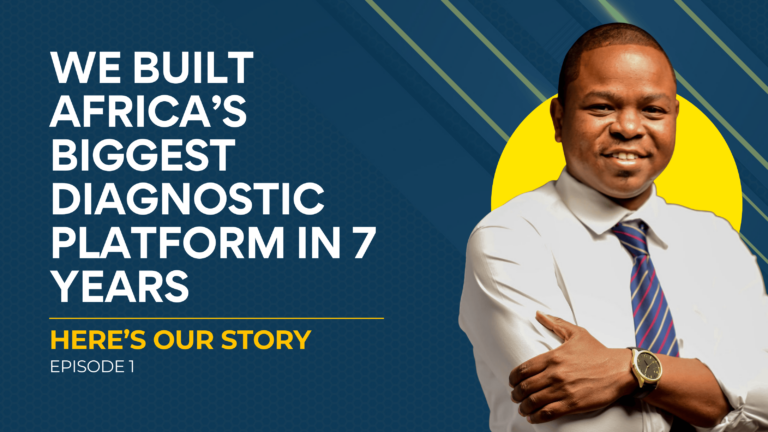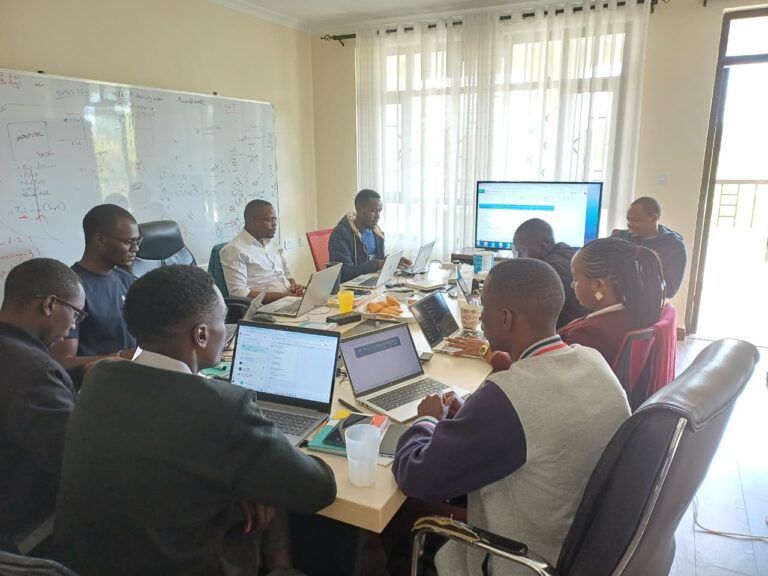
Embracing Telepathology: Using Digital Tools and AI in Histopathology Reporting in Africa.
Histopathology is the cornerstone of accurate diagnosis and management of cancers, infectious diseases, inflammatory conditions, genetic syndromic diseases, and many other disorders. Despite the great demand for histopathology diagnostic services across most African countries, there exists a critical shortage of well-trained pathologists who are mostly concentrated within urban regions.
In some nations, the ratio is as low as one pathologist per one million people, compared to one per twenty thousand in high-income countries, and it is common knowledge that there is a severe workforce gap, which contributes to delays in diagnosis, misdiagnosis, and inequitable access to specialised expertise.
Digital pathology and artificial intelligence (AI) tools are transformative enablers of telepathology (remote interpretation of pathology images); however, their uptake in strengthening diagnostic services in Africa still remains wanting. Telepathology refers to the practice of pathology using telecommunications technology to transmit digitised histology slides for interpretation and reporting. The provider and user need not share the same geographical location for the services to be effective. Traditionally, histopathology relies on glass slides examined under a light microscope. Telepathology disrupts this model by digitising slides using scanners or microscope cameras and enabling remote access through secure networks.
The main modalities used in telepathology are static telepathology, where selected still images are captured and shared, dynamic or live telepathology, where robotic microscopes can be controlled remotely, and whole-slide imaging (WSI), where entire slides are scanned at high resolution, allowing pathologists to pan and zoom much like using a microscope.
In Africa, static telepathology was the earliest form implemented because of its low cost and minimal infrastructure requirements. However, advances in WSI technology and decreasing costs of data storage and transmission are paving the way for more comprehensive and real-time systems.
Digital pathology converts glass slides into whole-slide images. These digital slides can be archived, annotated, shared, and analysed computationally. In Africa, digitisation not only facilitates remote consultation but is also critical in capacity building. For instance, digital archives allow the training of medical students and residents, ensuring uniform teaching material across institutions. Moreover, digitised images form the training data for AI algorithms, which can assist in rapid and accurate interpretation.
AI Applications in Telepathology in Africa
The benefits and applications of these tools are numerous and include remote subspecialty consultation and expert access, facilitation of external quality assurance (EQA) programmes, ensuring that pathology laboratories in Africa align with international standards, and education and training. Telepathology also enables participation in multidisciplinary tumour boards where surgeons, oncologists, and radiologists collaborate on patient management.
AI, particularly deep learning, has introduced new possibilities in pathology. Whilst AI cannot yet replace the pathologist, it serves as a valuable decision-support system. Current AI applications relevant to Africa include:
Triage and Quality Control: Algorithms can detect slide quality issues such as focus errors, artefacts, or tissue folding, ensuring only valid slides are reported (Bulten et al., 2020).
Automated Quantification: AI can measure biomarkers such as Ki-67, oestrogen receptor (ER), or HER2, which are critical in breast cancer management. Automated quantification reduces inter-observer variability and saves time.
Region of Interest Detection: AI highlights potential areas of diagnostic importance, such as mitotic hotspots, tumour-infiltrating lymphocytes, or suspicious glands, guiding the pathologist’s attention.
Disease Detection and Classification: Research models already demonstrate high accuracy in detecting cancers of the prostate, breast, and cervix. With proper validation on African cohorts, such models could be transformative in high-burden settings.
The synergy of telepathology and AI could enable a hybrid model where AI algorithms pre-screen slides, triage urgent cases, and support quantitative tasks, whilst pathologists provide the final interpretation.
Telepathology would benefit the entire African continent by addressing workforce shortages through extending the reach of existing pathologists, reducing turnaround time since most digital setups allow for round-the-clock service delivery, and enhancing equity by ensuring rural and under-resourced hospitals can access the same diagnostic expertise as urban centres.
Whilst the initial investment in scanners and IT infrastructure is significant, long-term savings come from efficiency gains, reduced patient travel, and fewer repeat biopsies, which would eventually lead to cost-effective services in the long term.
Challenges
Some of the current challenges in embracing telepathology services include:
Infrastructure Limitations: Many regions lack reliable electricity, high-speed internet, or data storage solutions capable of handling large image files.
High Initial Costs: Whole-slide scanners remain expensive, and ongoing maintenance and calibration can be challenging.
Legal and Regulatory Frameworks: Data protection and patient confidentiality must comply with national laws, such as Kenya’s Data Protection Act (2019).
Validation Requirements: International guidelines, such as those of the College of American Pathologists (CAP), require rigorous validation of digital workflows before use in primary diagnosis.
Human Resource Training: Pathologists, laboratory technologists, and IT staff must be trained to manage digital workflows and interpret AI outputs correctly.
Sustainability: Donor-funded pilot projects often struggle to sustain operations once initial funding ends. Local ownership and integration into health systems are critical.
Pathways to Implementation and Future Directions
For Africa to realise the full benefits of telepathology and AI, a phased approach is recommended:
Pilot Projects: Start with selected hospitals and cancer types, validating workflows and demonstrating impact on turnaround time and accuracy.
Integration with Laboratory Information Systems: Ensure interoperability using standards like DICOM for images and HL7/FHIR for patient data.
Capacity Building: Develop training programmes for laboratory staff, residents, and biomedical engineers.
AI Validation: Locally validate AI tools before clinical deployment, ensuring accuracy across diverse African pathology samples.
Regulatory Strengthening: Align telepathology practice with data protection laws, consent requirements, and medical licensure policies.
Regional Collaboration: Establish regional hubs of excellence that provide telepathology support to neighbouring countries, creating economies of scale.
The future of telepathology in Africa will likely be shaped by cloud-based platforms that reduce the need for expensive local infrastructure, low-cost scanners and smartphone-based solutions for smaller laboratories.
Regional AI training datasets that represent African histopathology will ensure that algorithms are not biased towards Western populations, whilst integration into national cancer control programmes would make telepathology a core health system function rather than a research add-on.
Policy harmonisation across African Union member states to enable secure cross-border data sharing is necessary.
Telepathology, powered by digital and AI tools, represents a game-changing solution for Africa’s pathology crisis. By digitising histology slides, enabling remote consultations, and incorporating AI decision support, countries can overcome workforce shortages, improve diagnostic accuracy, and build resilient health systems. However, success requires deliberate investment in infrastructure, training, legal frameworks, and sustainability. With strategic implementation and regional collaboration, telepathology can bridge the diagnostic divide and improve patient outcomes across the continent.

